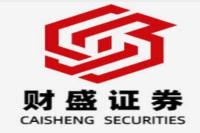Decoding the Central Bank's Move: Understanding China's 3870 Billion Yuan Reverse Repo Operation
Meta Description: China's central bank injected 3870 billion yuan through a reverse repo operation, maintaining the interest rate at 1.50%. This article delves into the implications of this monetary policy decision, analyzing its impact on liquidity, interest rates, and the broader economy. We'll explore the nuances of reverse repos, their role in monetary policy, and what this move signifies for investors and businesses. Keywords: Reverse Repo, Monetary Policy, China, Central Bank, Liquidity, Interest Rates, Yuan, Economic Stimulus
Imagine this: you're running a massive business – the economy of an entire nation. Keeping things running smoothly requires careful financial maneuvering, a delicate dance between supply and demand, and an uncanny ability to anticipate market shifts. This is precisely the role of a central bank, and their recent actions in China have sparked considerable interest. Today's 3876 billion yuan (RMB) injection via a seven-day reverse repo operation, maintaining the interest rate at a steady 1.50%, is just one piece of this intricate puzzle. But what does it really mean? Is this a sign of economic slowdown, a proactive measure to boost growth, or something else entirely? Let's dive deep into the complexities of this financial maneuver and unravel its potential implications for businesses, investors, and the everyday citizen. This isn't just about numbers on a spreadsheet; it's about real-world impacts – from the cost of borrowing money to the availability of credit for small businesses and the overall health of the Chinese economy. Understanding this move is key to understanding the future direction of one of the world's most influential economies. So buckle up, because we're about to dissect this financial operation and explore its far-reaching consequences. We’ll examine the underlying economic conditions, the historical context of similar actions, and speculate on the potential future trajectories based on expert analysis and market trends. Prepare to gain a deeper understanding of China's intricate financial landscape and the subtle art of monetary policy management.
Understanding Reverse Repo Operations: A Key Tool in China's Monetary Policy Arsenal
A reverse repo operation, in a nutshell, is like the central bank borrowing money from commercial banks. It's a crucial tool for managing liquidity in the financial system. Think of it as a sophisticated valve regulating the flow of money. By injecting funds through reverse repos, the central bank increases the amount of cash available in the banking system. This, in turn, can lower short-term interest rates, making borrowing cheaper and potentially stimulating economic activity. It's a bit like adding fuel to the engine of the economy. Conversely, if the central bank wants to tighten monetary policy, it can drain liquidity by letting reverse repos mature without replacing them.
The recent operation, with a 1.50% interest rate mirroring the previous one, suggests a deliberate strategy. Maintaining the rate, despite the net injection of 3090 billion yuan (after accounting for maturing repos), indicates the central bank's careful balancing act. They are providing liquidity without necessarily signaling a dramatic shift in policy. This nuanced approach reveals a sophisticated understanding of the current economic climate and a willingness to fine-tune the system rather than resorting to drastic measures.
The Significance of the 3090 Billion Yuan Net Injection
The net injection of 3090 billion yuan is the real headline here. While maintaining the interest rate at 1.50% suggests a cautious approach, the sheer magnitude of the injection speaks volumes. It suggests a proactive effort to ensure sufficient liquidity in the system, potentially addressing concerns about credit availability or slowing economic growth. This isn't a knee-jerk reaction; it’s a calculated move based on comprehensive data analysis and a thorough understanding of the market dynamics. This substantial liquidity injection could have a ripple effect throughout the economy, potentially boosting investment, consumption, and overall economic activity.
Let's consider some potential scenarios:
- Counteracting Economic Slowdown: The injection could be a response to signs of weakening economic growth, ensuring that businesses have access to the credit they need to operate and expand.
- Managing Inflationary Pressures: While seemingly counterintuitive, a liquidity injection can sometimes be used to manage inflationary pressures by ensuring sufficient credit supply to meet demand without excessive price increases. It's a delicate balancing act.
- Maintaining Financial Stability: The injection could be a preventative measure to maintain the stability of the financial system, preventing potential liquidity crunches or credit market disruptions.
To truly understand the significance, it's crucial to examine the broader economic context. We need to look at indicators like GDP growth, inflation rates, and consumer confidence to gain a clearer picture of the central bank's motivations.
Analyzing the Impact on Interest Rates and the Broader Economy
The decision to maintain the 1.50% interest rate on the reverse repo operation sends a strong signal of stability. It suggests that the central bank is comfortable with the current interest rate environment and doesn't see an immediate need for significant adjustments. However, the impact ripples beyond just interest rates. Increased liquidity can lead to:
- Lower borrowing costs for businesses: This can stimulate investment and expansion, creating jobs and boosting economic growth.
- Increased lending activity by banks: With more cash on hand, banks may be more willing to provide loans to businesses and consumers.
- Potentially higher asset prices: Increased liquidity can potentially push up the prices of assets like stocks and real estate.
However, it's important to note that these are potential impacts, and the actual effects will depend on various factors, including the overall economic climate, global market conditions, and the response of businesses and consumers. The central bank's actions are a key driver, but not the sole determinant, of economic outcomes.
Frequently Asked Questions (FAQs)
Here are some common questions about the recent reverse repo operation:
Q1: What is a reverse repo operation?
A1: A reverse repo operation is a short-term borrowing agreement where the central bank borrows money from commercial banks, injecting liquidity into the financial system. It's a crucial tool for monetary policy.
Q2: Why did the central bank inject 3090 billion yuan?
A2: The reasons are multifaceted, likely including maintaining sufficient liquidity, supporting economic growth, and managing potential risks to financial stability. It’s a proactive measure, not necessarily a reaction to an immediate crisis.
Q3: What does maintaining the interest rate at 1.50% signify?
A3: It suggests the central bank is satisfied with the current monetary policy stance and doesn’t see a pressing need for immediate adjustments, emphasizing stability and a carefully calibrated approach.
Q4: What are the potential impacts of this injection on the economy?
A4: Potential impacts include lower borrowing costs for businesses, increased lending activity, and potentially higher asset prices. However, the actual effects will depend on several interacting economic factors.
Q5: Could this lead to inflation?
A5: While increased liquidity can potentially contribute to inflation, the central bank carefully considers this risk. The 1.50% interest rate suggests a cautious approach to managing inflation and balancing economic growth.
Q6: How does this compare to previous reverse repo operations?
A6: Comparing this operation to prior ones requires analyzing the context, including the amount injected, the prevailing interest rates, and the overall economic situation at the time. This should be compared to historical data to determine if this is a significant departure from previous actions.
Conclusion: Navigating the Complexities of Monetary Policy
The recent 3876 billion yuan reverse repo operation by the People's Bank of China represents a complex and strategic move in the ongoing management of the Chinese economy. While the maintenance of the 1.50% interest rate signals a degree of stability, the significant net injection of 3090 billion yuan reveals a proactive approach to managing liquidity and fostering economic activity. Understanding this nuanced strategy requires looking beyond the headline numbers and considering the broader economic context, including growth rates, inflation pressures, and the overall health of the financial system. The impact of this move will unfold over time, and continued monitoring of key economic indicators will be essential for a complete understanding of its consequences. The central bank's action underscores the dynamic and intricate nature of monetary policy and its crucial role in shaping the economic landscape. It's a constant balancing act, and the choices made have far-reaching consequences for businesses, investors, and individuals alike.



